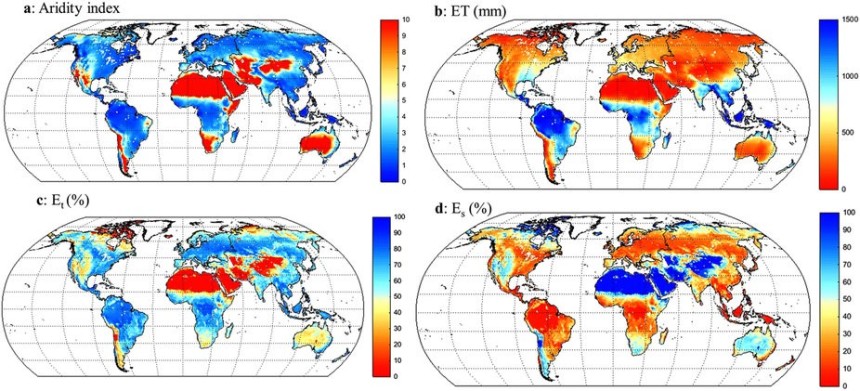Vegetation plays a key role in the changing global energy and water cycles

Evapotranspiration from the global land surface has increased significantly due to increases in transpiration and interception that are only partially counteracted by decreasing soil evaporation, a new study reports.
Terrestrial evaporation (ET) is a key component of the energy and water cycles over global land. Recent research by Yongqiang Zhang and his colleagues has estimated the contribution of the main components of ET (transpiration from vegetation, direct evaporation from the soil, and vaporization of intercepted rainfall from vegetation) to a trend increase over the period 1981–2012.
Recent studies have focused on ET trends in the last several decades, and have attribute these trends to regional drought, climate change, or internal climate variability. However, according to the authors of this study “the relative contribution of the three main components to these global trends remains unknown.”
In their study, the researchers used a well-validated diagnostic model to estimate daily ET during 1981–2012, and its three components. Results of the study showed that ET over land has increased significantly due to increases in transpiration and interception, which are partially counteracted by decreasing soil evaporation.
“These contrasting trends are primarily driven by increases in vegetation leaf area index, dominated by greening,” according to the authors.
The study found that the overall increase in plant transpiration over land is about two times greater than the decrease in soil evaporation. An important finding was that these opposing trends are not correctly simulated by most climate change prediction models that were assembled through the Coupled Model Intercomparison Project phase 5 (CMIP5). This finding highlights the importance of realistically representing vegetation changes in earth system models for predicting future changes in the energy and water cycle.
The monthly aggregated global terrestrial evapotranspiration data, as well as the three ET components, are freely available via this link.
Reference: Yongqiang Zhang, Jorge L. Peña-Arancibia, Tim R. McVicar, Francis H. S. Chiew, Jai Vaze, Changming Liu, Xingjie Lu, Hongxing Zheng, Yingping Wang, Yi Y. Liu, Diego G. Miralles & Ming Pan (2016) ‘Multi-decadal trends in global terrestrial evapotranspiration and its components’, Scientific Reports, doi: 10.1038/srep19124
